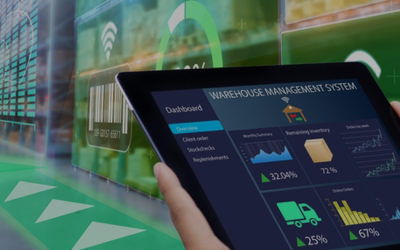The case for a hybrid workforce post COVID-19
Automation has ushered in a digital workforce characterized by digital assistants and digital buddies. At ITC Infotech, this has been in the skunkworks for the past year over which we have witnessed an increasing interest from customers. With COVID-19 driving widespread disruption and extreme business volatility in business, the demand for a digital workforce will get stronger.
Today, there are some industry segments that are witnessing sharp demand uplift. These industries include Healthcare, Online Grocery Retail, Banking and Insurance, and Online Education Services. One online pharmacy in the UK saw a 1044% spike in the demand for hand sanitizers last February 1. The growth in transaction volume and customer interactions has been so overwhelming that Amazon, in a bid to meet skyrocketing demand, announced in mid-March that would hire 100,000 people to manage volumes triggered by COVID-19 2. In India alone, medical insurance saw an increase of 42%. 3 Edtech companies, now offering many of their courses free to students in deference to current conditions, have witnessed a “huge spike” 4. Clearly, there is an urgent need to raise capacity in these specific business areas to handle increasing volumes. One way to do this is to raise a digital workforce.
The traditional response to such demand spikes has been to hire a temporary workforce or sub-contract to augment service capacity. However, this process has long lead times. Given today’s realities—of lockdowns and social distancing—it is unrealistic to imagine that even a fraction of the surge in demand can be met through traditional workforce augmentation.
Before taking any step to address the problem, we need to ask a key question: When will volumes stabilize? As of today, we don’t know. It could be a 3-week phenomenon, a 3-month phenomenon, or much more. The uncertainty adds complexity to the decision of investing in workforce augmentation. There is a related and more uncomfortable question to the problem: When volumes stabilize and go back to normal levels, what does a business do to scale down? The typical answer would be to lay-off or retrench—a process that is neither easy nor desirable.
Could automation provide a solution? We think so. By quickly building text and voice-based digital assistants (bots), the need to scale can be met without having to downsize when volumes stabilize a few months from now.
Creating digital assistants around specific target roles and job descriptions in industry segments where the current impact is being severely felt will be the perfect response. Automation allows flexible capacity to be built and it allows the human cost and heartbreak of retrenchment to be taken out of the equation.
What we are suggesting is this: Consider a hybrid workforce where employees are provided with digital assistants who work together to boost efficiency and productivity.
About the author:
Sandeep Kumar
Sr. VP & Head Global Consulting
Sandeep Kumar has over 24 years of management consulting and operations experience. He was the APAC consulting head at Infosys for their manufacturing vertical which gave him the exposure on scaling a consulting business across emerging markets. For the last 6 years, he has been instrumental in building and growing the consulting business for ITC Infotech to move up the value chain. He is an alumnus of NIT, Rourkela and IIM, Bangalore.











